Phytoplankton and Pigments – One Ten East Log
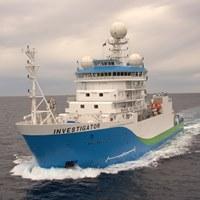
One Ten East Logs from the IIOE-2 voyage aboard RV Investigator will be posted on the WAMSI website during the month long voyage.
We have had another great day and have almost completed Station 2 on the 110 East line.
It has been a little cloudy and a little breezier today but the flesh-footed shearwaters are happily gliding just above the waves. Everyone is getting into the swing of having their nets deployed and retrieved and the sample jars are being dutifully labelled and nicely filled!
Log from One Ten East
The RV Investigator is currently undertaking oceanographic research along the 110°E meridian off Western Australia as part of the second International Indian Ocean Expedition. The voyage is led by Professor Lynnath Beckley of Murdoch University and the research is supported by a grant of sea time on RV Investigator from the CSIRO Marine National Facility.
| Date: May 19, 2019 | Time: 1200 AWST |
| Latitude: 36.5°S | Longitude: 110°E |
| Wind direction: NNW | Wind speed: 27 knots |
| Swell direction: SW | Depth: 5365 m |
| Air temperature: 16°C | Sea temperature: 15.3°C |
| Notes: It’s a bit rainy and soggy today but this is not dampening the spirits of the scientists aboard RV Investigator! This morning we completed our deepest CTD to date, at over 5 km depth. | |
Phytoplankton & Pigments
By David Antoine and Martina Doblin
Phytoplankton–the microscopic plants inhabiting the surface lit layers of the ocean are among the most diverse group of micro-organisms inhabiting the planet. They comprise eight main groups, have individual cell sizes from less than a micron to about one millimeter (see Figure below) and play various roles in the ecosystem. As they photosynthesize, they collectively represent the first link of the marine food web. All phytoplankton contain the pigment chlorophyll-a, which is measured to ascertain phytoplankton biomass. As well as chlorophyll-a, each phytoplankton group has other accessory pigments, which can be used to determine phytoplankton groups or size classes. Phytoplankton are also responsible for the transfer of carbon dioxide from the atmosphere to the deep layers of the ocean and ultimately the sediments of the sea floor.
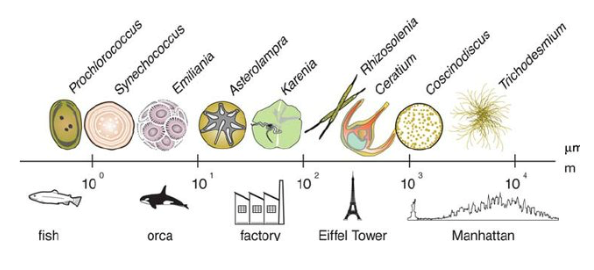 |
| Fig 1. An indication of the scale of phytoplankton size in microns relative to larger biota and recognisable land features in metres. Source : Finkel et al. 2010. J. Plank. Res. 32(1), 119-137. |
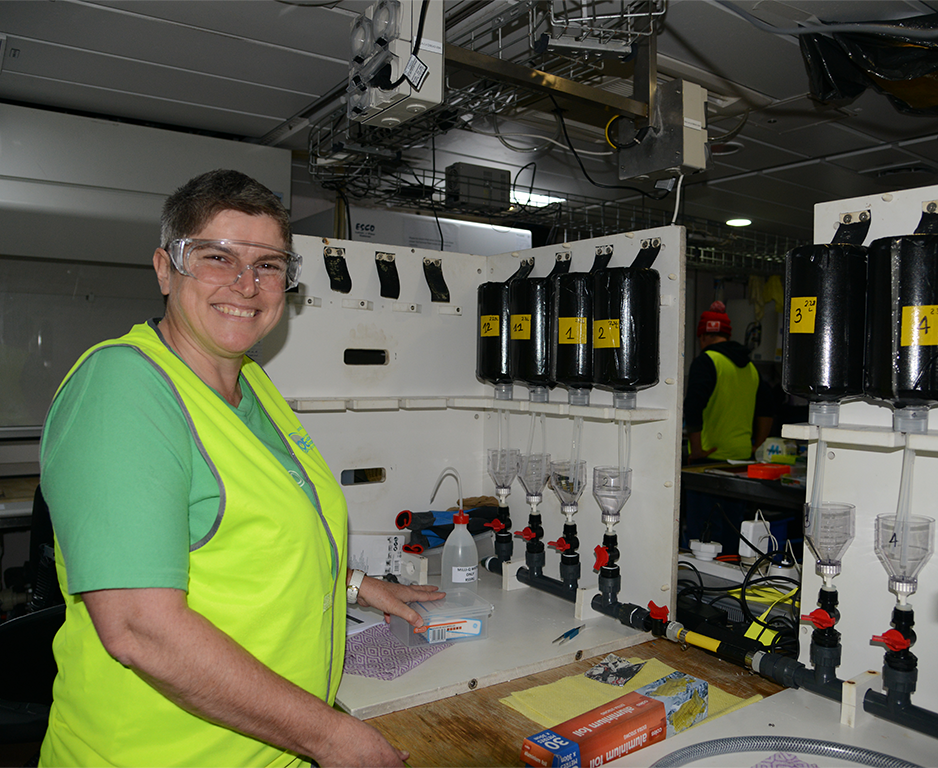 |
| Peta Vine (University of Technology Sydney) using the large filtration rack to separate phytoplankton and their associated pigments from water samples collected at different depths with the CTD Niskin bottles. Photo: Micheline Jenner. |
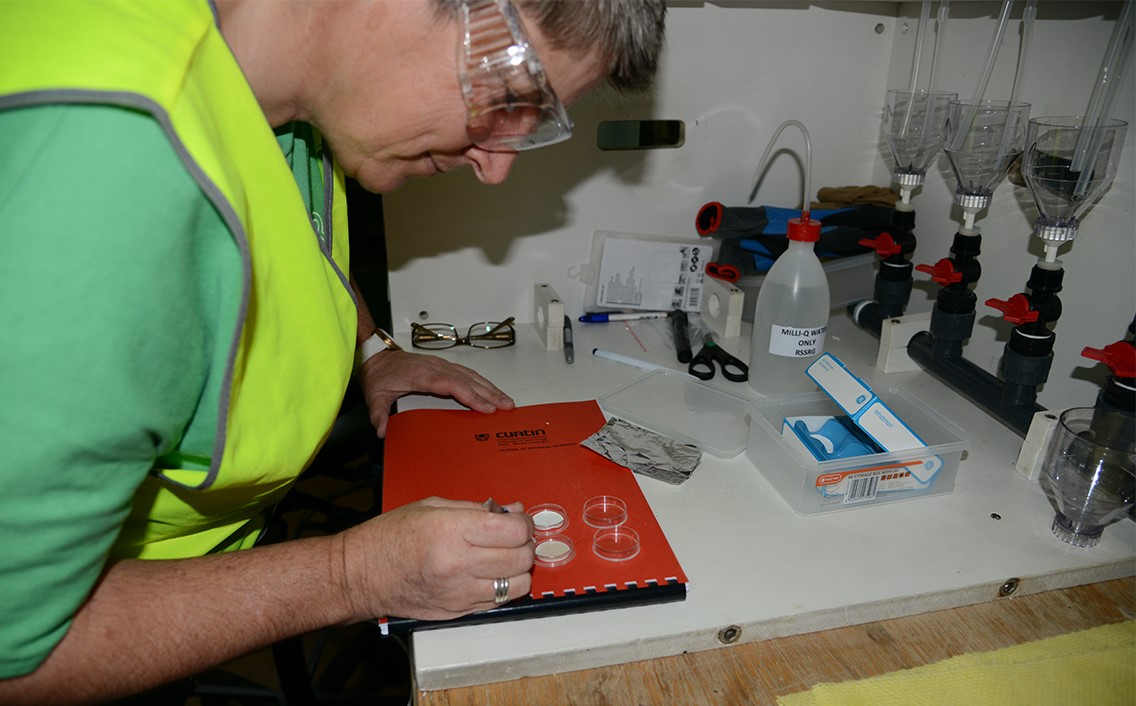 |
| After the water has been filtered the pigments remain on the small filter papers and here, Peta Vine (University of Technology Sydney) points to a filter with pigments, in comparison to the adjacent clean filter. Photo: Micheline Jenner. |
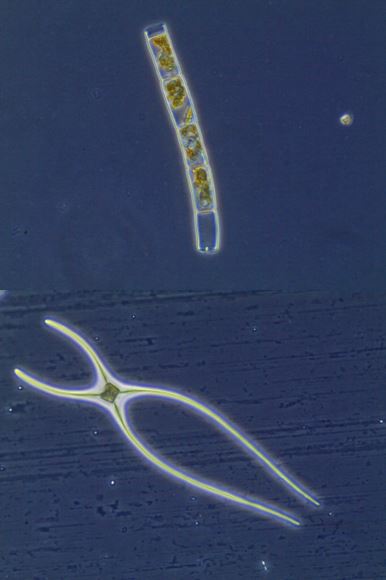 |
| Examples of phytoplankton from the south-east Indian Ocean. Top: A diatom chain clearly showing green chlorophyll and a stunning Chaetoceros sp. photographed under a microscope from water samples collected from the RV Investigator on the 110°East line. Photo: Dr Peter Thompson. |
Be sure to follow our daily Log from One Ten East at https://iioe-2.incois.gov.in or www.wamsi.org.au

